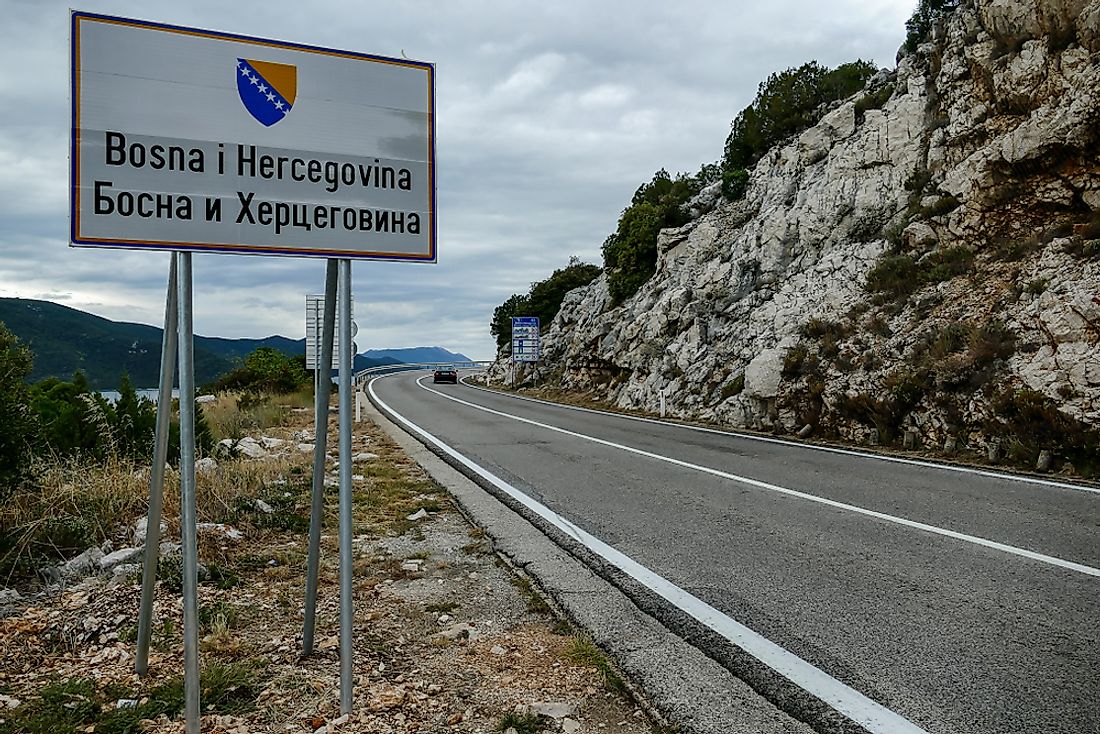What Languages Are Spoken in Bosnia and Herzegovina?

Bosnian, Serbian and Croatian are the three official languages in Bosnia and Herzegovina. The primary language is Bosnian, although all three languages bear similarities with each other. From 1463, Bosnia was a territory of the Ottoman Empire, a period during which many Christian Slavs embraced Islam. The influence during this period resulted in the numerous Turkish and Arabic loanwords heard today in the Bosnian language. At the time of its withdrawal from Yugoslavia in 1991, Bosnia had a unique mix of 44% Muslims, 31% Serbs, and 17% Croats.
The Official Languages of Bosnia and Herzegovina
Bosnian
Bosnian uses the Latin and Cyrillic alphabets, and it has a simple 5-vowel system, all of which are monophthongs. In medieval times, Bosnian was written using an alphabet known as the Bosnian Cyrillic, which was a version of the Cyrillic alphabet. In the Ottoman era, Bosnian was written using a version of the Arabic alphabet. Bosnian is classified in the Indo-European group, and in the Slavic subset. The Slavics settled in Eastern Europe in 6th century AD after their departure from Old Poland. The Slavic languages became grouped as Southern, Western, and Eastern. The Bosnian language arose from the South Slavic languages, just like Croatian and Serbian. The language is based on Shtokavian, which is the most popular variation of Serbo-Croatian, and more particularly on the sub-dialect called Eastern Herzegovinian. Bosnian has more Arabic, Turkish, and Persian loanwords than Croatian and Serbian due to its links with these cultures via Islamic ties. Bosnia began to establish itself as an individual language after the disintegration of Yugoslavia in the 1990s. The language was given official status in 1994, as were Serbian and Croatian.
Serbian
Serbian is another language native to Bosnia and Herzegovina. Like Bosnian, Serbian has its basis on Shtokavian, and more particularly on the Eastern Herzegovinian, as well as the Šumadija-Vojvodina dialects. The Serbian Cyrillic alphabet was the work of Vuk Karadžić, a Serbian linguist who devised it by phonemic principles. The Latin alphabet, which is featured in Serbian, is the work of Ljudevit Gaj, a Croatian linguist who created it in 1830. Serbian has an estimated 1,086,027 speakers in Bosnia and Herzegovina. The bulk of Serbian words have been identified as being of indigenous Slavic lexical stock, and they can be traced to the Proto-Slavic language. Serbian also features numerous loanwords from German, Greek, Russia, Latin, Hungarian, Italian, and Turkish languages.
Croatian
Croatian is differentiated by the use of the Latin alphabet only, Ijekavian pronunciation, and several lexical differences in common words. Although Croatia is regarded as a variety of Serbo-Croatian, it is sometimes viewed as a distinct language on its own. The majority of Croatian linguists view the language as distinct, a notion which has been shown to be a key ingredient in national identity. Croatian was given official status by the EU following Croatia's inclusion in the bloc in 2013. The bloc subsequently began releasing a variety of its official Gazette in the language.
Immigrant Languages of Bosnia and Herzegovina
The immigrant language with the largest community of speakers in Bosnia and Herzegovina is Bulgarian, at 4,100. Other immigrant languages are Italian (3,600), Ukrainian (1,800), Turkish (1,200), and German.











